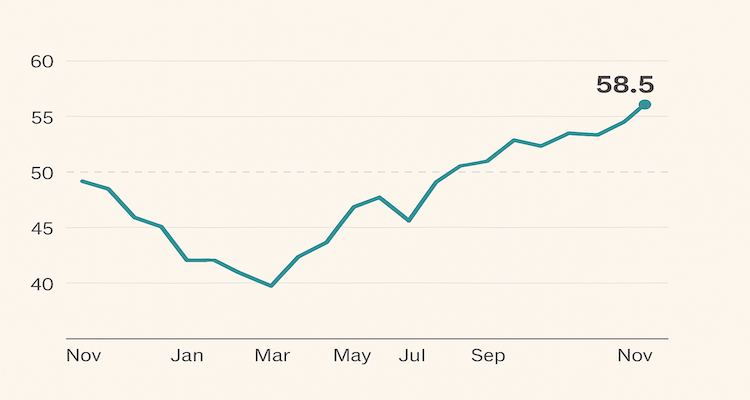Union Cabinet Approves ₹2,000 Crore Grant to NCDC to Empower India’s Cooperative Sector
The Modi government has sanctioned ₹2,000 crore in grant-in-aid to NCDC, aiming to strengthen cooperative societies across key rural and agricultural sectors from 2025 to 2029.
Empowering India’s Grassroots Economy: A New Chapter for Cooperatives
In a landmark move that underscores the government’s focus on rural empowerment and inclusive economic development, the Union Cabinet, led by Prime Minister Narendra Modi, has approved a Central Sector Scheme of grant-in-aid to the National Cooperative Development Corporation (NCDC). The initiative, spread over four years from 2025–26 to 2028–29, allocates ₹500 crore annually — totaling ₹2,000 crore — to revitalize and expand India’s vast cooperative ecosystem.
This strategic infusion of capital is expected to benefit approximately 2.9 crore members of 13,288 cooperative societies across diverse sectors including dairy, livestock, fisheries, sugar, textiles, food processing, and cold storage — offering fresh momentum to rural enterprise and collective economic participation.
NCDC: The Backbone of India’s Cooperative Movement
Established in 1963 under the National Cooperative Development Corporation Act of 1962, the NCDC operates as a statutory, non-equity-based organization dedicated to planning, promoting, and financing cooperative-based development.
From its inception, NCDC’s mandate has evolved significantly:
- 1974 Amendment: Expanded to cover fisheries, poultry, dairy, handloom, and sericulture; allowed access to capital markets.
- 2002 Amendment: Further included livestock, rural industries, crafts, water conservation, irrigation, agri-insurance, rural sanitation, and cooperative credit services.
Today, NCDC supports cooperative ventures across 30+ sectors, working to empower economically marginalized communities, artisans, tribals, and especially women-led cooperatives. Its flagship Integrated Cooperative Development Project (ICDP) takes a district-centric approach to socio-economic development.
Operating from its headquarters in New Delhi and 18 regional directorates, NCDC has also been pivotal in implementing national schemes such as:
- Formation of 10,000 Farmer Producer Organisations (FPOs)
- Promotion of Fish Farmers Producer Organisations (FFPOs) under the Pradhan Mantri Matsya Sampada Yojana
Main Development: ₹2,000 Crore Boost to Transform Rural Cooperatives
The newly announced grant-in-aid scheme is a significant push to mobilize cooperative-based development financing.
Here’s what it entails:
- ₹500 crore will be released annually between 2025–26 and 2028–29.
- Based on this grant, NCDC will raise ₹20,000 crore from open markets over four years.
- The funds will be deployed for:
- Setting up new projects by cooperatives
- Expansion of existing plants
- Providing working capital to enhance liquidity
As the executing agency, NCDC will oversee disbursal, monitor implementation, and ensure recovery of loans issued under this scheme.
Expert Insight: Strategic Investment in Self-Reliance
Economists and rural development analysts have widely lauded the Cabinet’s decision.
“This grant positions NCDC as a critical financing engine for rural industrialization,” said Dr. Asha Nair, professor of rural economics at Jawaharlal Nehru University. “It’s a structured way to enable local entrepreneurship in villages through cooperatives, rather than relying solely on large-scale corporate entry.”
Similarly, cooperative leaders from the dairy and handloom sectors welcomed the announcement.
“With this support, we can scale up cold-chain infrastructure and reduce post-harvest losses,” noted Ramesh Tiwari, director of a dairy cooperative in Uttar Pradesh.
Broader Implications: Reshaping India’s Rural Economic Architecture
India currently has over 8.44 lakh cooperative societies active in credit, housing, marketing, and agriculture — a sector often undercapitalized but deeply impactful in terms of employment and livelihoods.
The implications of this funding push include:
- Increased job creation in rural industries
- Enhanced credit access for underbanked communities
- Better infrastructure for perishable goods like fish, milk, and farm produce
- Stronger women-led cooperatives, particularly in sectors like textile and handloom
- Boost to tribal and artisan economies, traditionally reliant on informal networks
By promoting decentralized, member-driven organizations, the move aligns with the government’s broader vision of “Sahkar Se Samriddhi” — prosperity through cooperation.
Looking Ahead: From Funding to Transformation
This grant-in-aid is not merely about capital. It is about redefining cooperative governance and unlocking local potential. The NCDC’s performance over the next four years will be crucial in determining whether India can scale cooperative models as viable engines of growth in a globalized economy.
With the right implementation, oversight, and community engagement, this scheme has the potential to revolutionize rural India — bringing prosperity not through charity, but through shared ownership, responsibility, and enterprise.
Conclusion: A Renewed Vision for Cooperative Growth
The ₹2,000 crore grant to NCDC represents a bold and timely intervention in India’s development journey — one that empowers millions of rural citizens to chart their own economic destinies. As the government deepens its commitment to cooperative-led development, the success of this initiative may well set the template for inclusive, sustainable growth rooted in India’s villages.
Disclaimer : This article is based on publicly available government announcements and expert commentary. It is for informational purposes only and does not constitute financial or legal advice.











